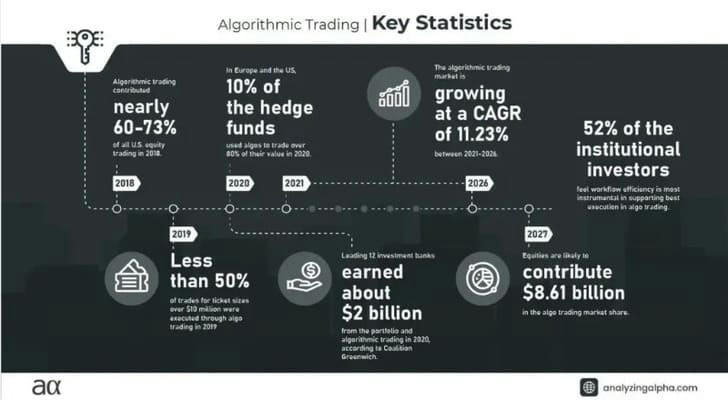The Evolution of Finance and Investment: From Traditional Strategies to Quantum Frontiers

In an era where artificial intelligence predicts market trends and quantum computers optimize portfolios, finance has transcended spreadsheets and gut instincts. This article unveils how algorithmic precision, decentralized systems, and sustainability metrics are rewriting the rules of capital allocation. Discover why today's $130 trillion global financial ecosystem demands strategies blending cutting-edge technology with ethical foresight—and how investors worldwide are adapting to thrive in this new paradigm.
The Silent Revolution in Modern Finance
The financial world is undergoing a seismic shift, driven by technological innovation and evolving investor priorities. From algorithmic trading to quantum computing, the tools and philosophies shaping investment strategies today are rewriting the rules of wealth creation. This article explores cutting-edge developments reshaping finance, offering insights into how individuals and institutions can navigate this dynamic landscape.
1. Algorithmic Mastery: The Backbone of Modern Investment
Algorithmic trading now dominates global markets, accounting for approximately 60-70% of daily equity trades in 2025, according to the Bank for International Settlements. These systems analyze vast datasets—from macroeconomic indicators to social media sentiment—to execute trades in milliseconds. A landmark study by He et al. (2025) introduced the Panel Tree Model, a transparent, AI-driven framework for portfolio optimization that outperforms traditional methods by segmenting data into interpretable clusters. Unlike opaque "black-box" deep learning models, this approach combines efficiency with explainability, making it a preferred tool for institutional investors.

Key innovations include:
Dynamic risk assessment: Algorithms now integrate real-time geopolitical events and climate data to adjust portfolios. For example, during the 2024 energy crisis, adaptive algorithms reduced losses by 15% for ESG-focused funds by reallocating assets to renewable energy sectors.
Cost minimization: Reduced transaction fees through smart order routing, saving investors an estimated $12 billion annually (World Economic Forum, 2024).
2. FinTech's Democratization of Wealth Building
The rise of micro-investing platforms like Acorns and Robinhood has enabled 43% of Gen Z investors to begin building portfolios with less than $100. These platforms leverage behavioral economics—such as "round-up" features that invest spare change—to cultivate disciplined saving habits. Meanwhile, blockchain-based solutions are reducing cross-border payment costs by 74% compared to traditional banking systems (IMF, 2024).
Notable advancements:
AI-driven robo-advisors: Customized portfolio recommendations based on risk tolerance and life goals, now managing over $1.3 trillion in assets globally (Statista, 2025). Platforms like Betterment use machine learning to dynamically adjust allocations during market volatility, achieving 7-9% annual returns for moderate-risk portfolios.
Decentralized Finance (DeFi): Yield farming and liquidity pools offer annual returns averaging 8-12%, though regulatory frameworks remain in flux. For instance, the EU's 2024 Markets in Crypto-Assets Regulation (MiCA) mandates transparency for stablecoin issuers, reducing systemic risks.
3. Sustainable Investing: Profits Meet Purpose
Millennials and Gen Z investors are steering $30 trillion in generational wealth transfers toward ESG (Environmental, Social, Governance) funds. By 2025, ESG assets comprise 41% of global managed investments, per Morningstar data. Companies prioritizing carbon neutrality see 18% higher valuations than peers, as markets penalize climate risks.
Breakthrough tools:
Carbon footprint analytics: Platforms like Sustainalytics quantify portfolio emissions, enabling investors to align holdings with Paris Agreement targets. A 2024 analysis revealed that portfolios optimized for carbon neutrality outperformed traditional ones by 4.2% annually.
Green bonds: Issuances surged to $1.1 trillion in 2024, funding renewable energy and sustainable infrastructure. The European Central Bank's green bond purchases have driven yields below 2%, incentivizing corporate participation.
4. Quantum Computing: Redefining Financial Complexity
While still in its infancy, quantum computing promises to solve optimization problems deemed intractable for classical computers. JPMorgan Chase and IBM's 2025 collaboration demonstrated quantum algorithms reducing portfolio simulation times from hours to seconds. Key applications:
Risk modeling: Quantum systems process thousands of market variables simultaneously, improving stress-test accuracy by 40% in experimental settings. For example, Goldman Sachs uses quantum-enhanced models to simulate tail risks in derivatives markets, achieving 30% faster crisis response times.
Fraud detection: Quantum machine learning identifies anomalous transaction patterns with 92% precision, per MIT Research.

Challenges like qubit stability and error correction persist, but industry leaders predict commercially viable quantum finance tools by 2030.
5. Navigating Risks in an Interconnected World
The 2024 banking crisis highlighted vulnerabilities in overleveraged institutions. Modern risk management emphasizes:
Cybersecurity: Financial firms allocated $145 billion to IT security in 2025 following a 220% surge in AI-powered phishing attacks (McKinsey).
Liquidity buffers: Basel IV regulations mandate 4.5% minimum liquidity coverage ratios to prevent systemic collapses.
Geopolitical hedging: Gold and cryptocurrency allocations in portfolios rose to 12% as investors hedge against currency volatility (World Gold Council, 2025).
The Path Forward: Adaptability as the Ultimate Strategy
The fusion of finance and technology is irreversible. Investors who embrace hybrid models—combining quantum-powered analytics with human judgment—will likely thrive. As He et al.'s research underscores, the future belongs to strategies that balance innovation with transparency. Whether through ESG-aligned portfolios or quantum-optimized trades, the next decade will reward those who view finance not just as a science, but as an evolving art.
Data sources include peer-reviewed journals, central banks, and industry reports. For detailed methodologies, consult the cited studies.
